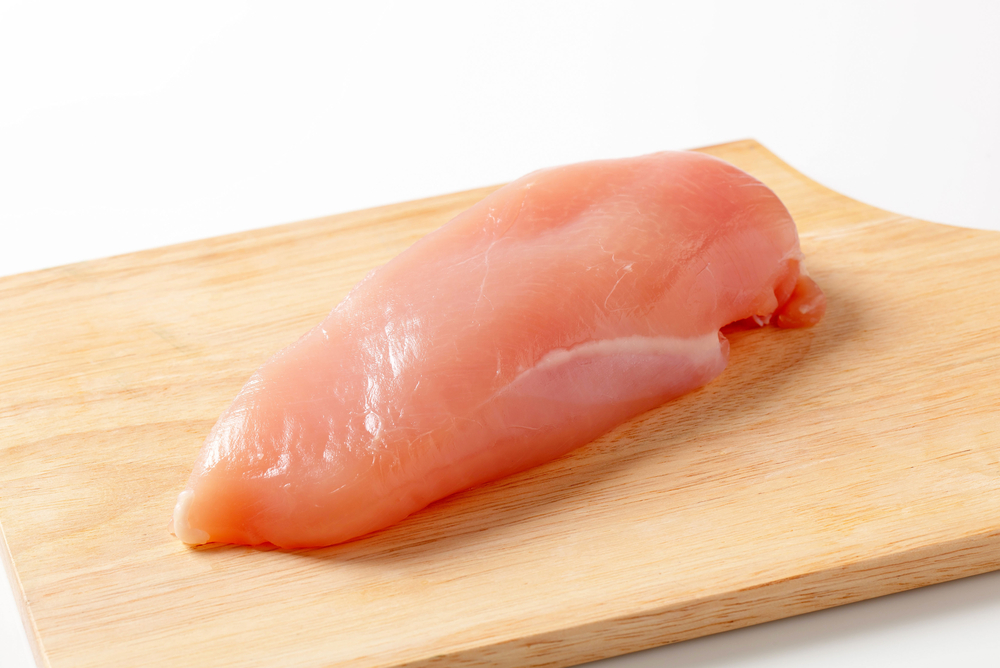Could Eating Poultry Raise Your Risk of UTIs?

The poultry products you buy at the grocery store may be a source of bacteria that cause urinary tract infections (UTIs) in people, a new study suggests.
In the study, researchers analyzed samples of meat from grocery stores in California, as well as urine samples from patients with UTIs; the scientists were looking for the presence of Escherichia coli (E. coli) bacteria. There are many strains of E. coli, and most are harmless to people, but some cause disease, including UTIs.
Out of the six strains of E. coli known to cause the majority of UTIs around the world, the researchers detected three strains in the meat samples tested, the majority of which were poultry products.
The findings "suggest that there might be a food-borne source of urinary tract infection," said study co-author Dr. Cindy Friedman, of the Center for Disease Control and Prevention's Division of Foodborne, Waterborne and Environmental Diseases. However, the study does not show for certain that bacteria in meat products cause UTIs, and so more research is needed to examine the link further, the researchers said. [Top 7 Germs in Food That Make You Sick]
The study was recently presented at IDWeek 2017, an infectious disease conference in San Diego.
E. coli bacteria cause about 80 percent of UTIs in people, but exactly where the harmful bacteria come from is not clear, said study co-author Dr. Reina Yamaji, a postdoctoral research fellow at the University of California, Berkeley's School of Public Health, who presented the work at the conference on Friday, Oct. 6. Some earlier studies have suggested that the bacteria could come from food — from poultry products, in particular.
To examine this connection further, Yamaji and colleagues collected urine samples from more than 1,000 patients with UTIs at a university-affiliated health care center in 2016 and 2017. The scientists also sampled 200 meat products collected from local grocery stores near the university. The researchers analyzed bacterial DNA from both the meat and urine samples, looking for certain genetic "fingerprints" to determine which strains of E. coli were found in patients and in meat products.
Sign up for the Live Science daily newsletter now
Get the world’s most fascinating discoveries delivered straight to your inbox.
Results showed that, overall, 38 percent of the meat samples were contaminated with E. coli. Of the different types of meat, ground turkey was the most commonly contaminated, with 73 percent of ground turkey products testing positive for E. coli. In addition, 43 percent of chicken breast samples, 18 percent of ground beef samples and 15 percent of pork chop samples contained E. coli.
Overall, nearly one-quarter of the poultry products contained E. coli bacteria strains that were also found in the patient's urine samples.
As for how E. coli in meat could cause UTIs, the researchers hypothesized that this could happen when people don't properly cook raw meat, or don't properly handle the raw meat and thus contaminate parts of their kitchen or other foods with E. coli. Once ingested, the E. coli could live harmlessly in a person's intestine (if the bacteria is a type that does not cause food-borne illness). But if the E. coli passes out of the body in a person's stool, and some of that fecal material containing the bacteria then enters a person's urethra, it could cause a UTI, the researchers said.
Still, the study cannot prove a "cause and effect" relationship between the E. coli in the poultry products and people's UTIs. For one thing, the researchers did not ask participants about their dietary habits, so the scientists can't trace the path of the bacteria from food to patients, Friedman said. In addition, the researchers analyzed only part of the E. coli genome. Sequencing the full genome would provide more information about how closely the E. coli in poultry and the patients is related, the researchers said.
The study has not yet been published in a peer-reviewed scientific journal.
Original article on Live Science.

Rachael is a Live Science contributor, and was a former channel editor and senior writer for Live Science between 2010 and 2022. She has a master's degree in journalism from New York University's Science, Health and Environmental Reporting Program. She also holds a B.S. in molecular biology and an M.S. in biology from the University of California, San Diego. Her work has appeared in Scienceline, The Washington Post and Scientific American.











